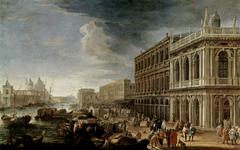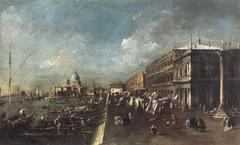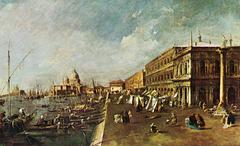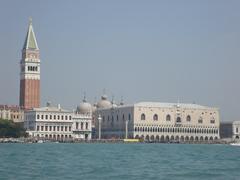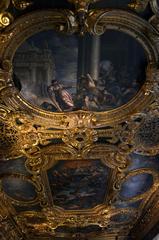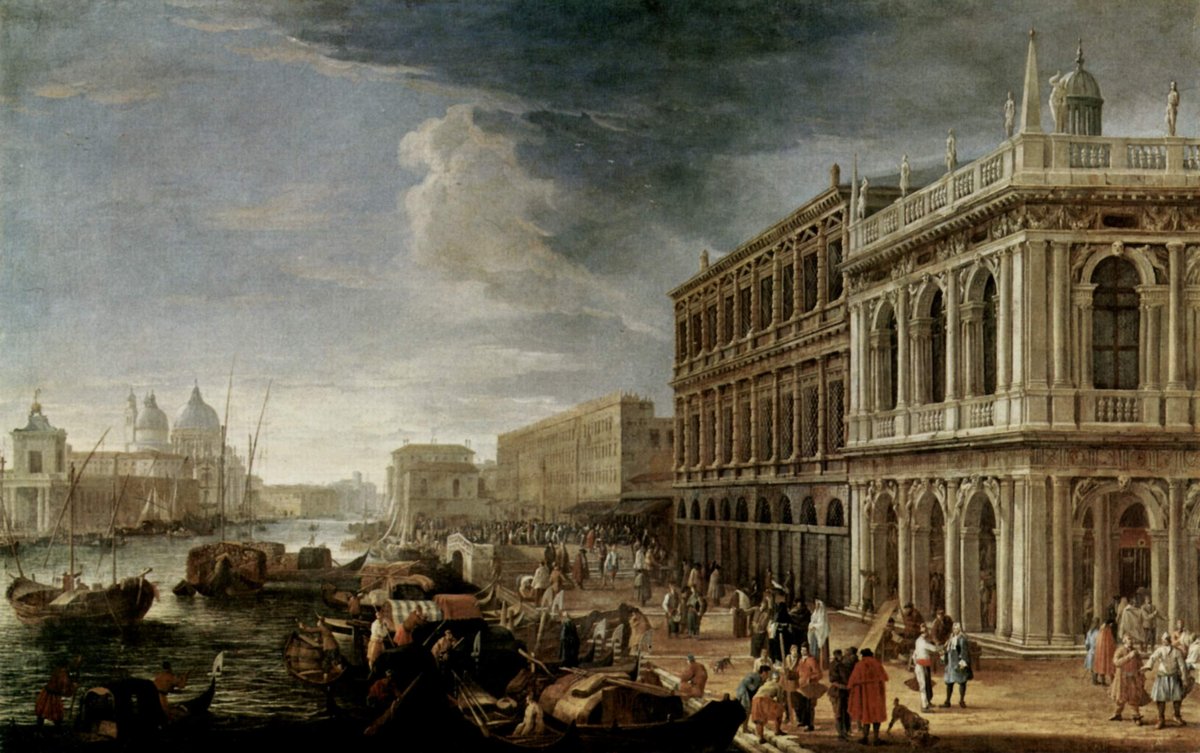
Zecca of Venice: Visiting Hours, Tickets, and Historical Site Guide
Date: 14/06/2025
Introduction
The Zecca of Venice—better known as the Venetian Mint—is a monumental emblem of the city’s economic prowess and Renaissance architectural innovation. Strategically located on the Piazzetta di San Marco beside the Biblioteca Marciana and the Doge’s Palace, the Zecca played a pivotal role in Venice’s ascent as a global maritime and financial power. Constructed between 1536 and 1548 under the direction of Jacopo Sansovino, the building once safeguarded the production of Venice’s renowned gold ducat, or “zecchino,” a currency trusted across Europe and beyond. Today, the Zecca is integrated with the Biblioteca Nazionale Marciana, inviting visitors to explore Venice’s rich cultural and monetary history through exhibitions, guided tours, and special events. This guide provides up-to-date details on visiting hours, ticketing, accessibility, and tips for making the most of your visit to this iconic site (Venice Museum, Biblioteca Nazionale Marciana).
Table of Contents
- Introduction
- Origins and Historical Context
- Architectural Features and Innovations
- Economic and Political Significance
- Venice’s Global Influence
- Decline and Adaptive Reuse
- Visiting the Zecca: Hours, Tickets, and Tips
- Frequently Asked Questions (FAQ)
- Visuals and Media
- Related Articles
- Conclusion
- Sources
Origins and Historical Context
The Zecca’s establishment was a direct response to Venice’s need for a secure, centralized coin-minting facility, reflecting the city’s dominant position in Mediterranean trade during the Renaissance (Venice Travel Tips). Before the Zecca, coinage was produced in scattered workshops, increasing the risk of theft, forgery, and inefficiency. The new mint’s location—alongside the Doge’s Palace—signified its integral role in the Republic’s economic and political machinery.
Architectural Features and Innovations
Jacopo Sansovino’s design for the Zecca embodies the robust and fortress-like spirit of Venetian Renaissance architecture. The use of thick Istrian stone walls and rusticated masonry prioritized fire resistance and security, essential for a mint handling precious metals. Minimal ornamentation, small barred windows, and heavy arches deterred theft. The ground floor was dedicated to minting, while administrative offices occupied the upper stories. Fireproof vaults—constructed with brick and iron—represented engineering advancements of the era (ArchDaily). Notable artistic elements include a monumental entryway by Vincenzo Scamozzi and sculptures by Girolamo Campagna and Tiziano Aspetti (Planergo).
Economic and Political Significance
The Zecca was central to the Venetian Republic’s economic engine. Coins minted here, especially the ducat, set European standards for weight and purity and facilitated international trade (CoinWeek). Strict oversight by the Provveditori alla Zecca ensured consistent quality and reduced fraud. Mint revenues funded public works and the navy, underpinning Venice’s resilience in times of war or crisis.
Venice’s Global Influence
Venetian coins were designed to meet the needs of diverse markets, from Western Europe to the Byzantine Empire and North Africa. The ducat became the preferred currency for merchants throughout the Mediterranean, strengthening Venice’s position in global commerce. Coins often bore the image of the Doge or St. Mark, symbolizing civic pride and sovereignty (ThoughtCo).
Decline and Adaptive Reuse
After the fall of the Republic in 1797, minting operations at the Zecca ceased. The building’s functions shifted under French and Austrian rule and, by 1852, the mint was closed. Since 1904, the Zecca has housed the Biblioteca Nazionale Marciana, preserving its architectural and historical legacy (Wikipedia). Today, it serves as a cultural hub for exhibitions and scholarly research.
Visiting the Zecca: Hours, Tickets, and Tips
Location and Access
The Zecca is located at Piazza San Marco, 7, on the Piazzetta San Marco, a short walk from landmarks such as St. Mark’s Basilica, the Doge’s Palace, and the Museo Correr (Trek Zone). The nearest vaporetto stops are San Zaccaria and Vallaresso.
Opening Hours
- Marciana Library (Zecca building):
- Monday–Thursday: 8:20 am – 7:00 pm
- Friday, Saturday, December 24th and 31st: 8:20 am – 1:30 pm
- Closed Sundays and major holidays (Venice Museum)
Note: The Zecca is part of the Biblioteca Nazionale Marciana and is not a standalone museum. Access to certain areas may be limited to special exhibitions or guided tours.
Ticket Information
- Standard ticket for St. Mark’s Square Museums (includes Marciana Library/Zecca): €25.00
- Reduced ticket: €15.00 (students 15–25, children 6–14, seniors over 65)
- Audio guide app: €9.00
- Tickets must be printed, are valid for three months from purchase, and are non-refundable (Venice Museum).
Travel Tips
- Plan ahead: Check official websites for special exhibitions or guided tour availability.
- Combine your visit: Pair the Zecca with the Doge’s Palace, St. Mark’s Basilica, and Museo Correr for a comprehensive experience.
- Accessibility: The Zecca is fully accessible and equipped with facilities such as restrooms and cloakrooms.
- Photography: Guidelines vary; photography is generally restricted in areas with rare manuscripts.
- Venice Access Fee: As of 2024, day visitors must pay a seasonal access fee (€3–€10), payable online or at kiosks (Italy Tourist Information).
- Venice Pass: Consider the Venice Pass for combined attraction and transport discounts (Visit Venezia).
Frequently Asked Questions (FAQ)
Q: Can I visit the interior of the Zecca of Venice?
A: Access is typically via the Marciana Library during opening hours. Some areas may only be available during special exhibitions or guided tours.
Q: How do I buy tickets?
A: Purchase online or at authorized vendors. Advance booking is recommended, especially during peak seasons.
Q: Is the Zecca accessible for disabled visitors?
A: Yes, with accessible entrances and facilities (Trek Zone).
Q: Are guided tours available?
A: Yes, private and group tours can be booked through official channels (Venice Museum).
Q: Can I take photos inside?
A: Photography may be restricted in some exhibition areas. Always check on-site guidelines.
Visuals and Media
Alt text: Exterior view of the Zecca of Venice, a Renaissance marble building at Piazza San Marco
Alt text: Interior courtyard of the Zecca of Venice featuring the Apollo statue by Danese Cattaneo
Map of Zecca of Venice location
Related Articles
- Exploring the Biblioteca Nazionale Marciana: Venice’s Literary Treasure
- Top Historical Sites to Visit in Venice
- Venice Biennale: A Guide to the City’s Premier Art Festival
Conclusion
The Zecca of Venice stands as a testament to the city’s economic ingenuity, architectural achievement, and enduring cultural legacy. Whether you are a history enthusiast, an architecture lover, or a curious traveler, the Zecca offers a unique window into Venice’s golden age and its pivotal role in global trade. Be sure to plan your visit by checking current hours and ticket options, and consider booking a guided tour for a deeper understanding.
For an enhanced experience, download the Audiala app for up-to-date guides, audio tours, and the latest on Venice’s cultural events. Stay connected with us for more travel tips and updates by following our social media channels and exploring related articles on Venice’s historic landmarks.
Summary: Key Points for Visiting the Zecca of Venice
- Historical importance: Once the mint of the Venetian Republic, the Zecca symbolizes Venice’s financial power and architectural innovation.
- Prime location: Situated in the heart of Venice, adjacent to major landmarks.
- Visitor experience: Access through the Marciana Library, with frequent exhibitions and guided tours available.
- Practical tips: Plan ahead, especially during peak season; consider combined tickets and the Venice Pass for savings and convenience.
- Accessibility: Fully accessible facilities and central to Venice’s main attractions.
Immerse yourself in the story of Venice by exploring the Zecca—a remarkable relic of the city’s storied past.
Sources
- Venice Travel Tips
- ArchDaily
- Springer
- Trek Zone
- Biblioteca Marciana Official Site
- Venice Museum
- Visit Venezia
- Food and Travel Utsav
- Italy Tourist Information
- Planergo
- Wikipedia
- CoinWeek
- ThoughtCo
